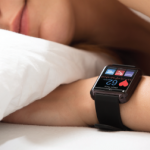WASHINGTON, D.C.—Patient advocates, researcher-clinicians and academic leaders are calling for closer scrutiny of new technologies applied within healthcare, saying they are especially concerned that these digital tools are being developed and implemented without proponents focusing enough on how they are affecting patient care.
Several of these healthcare insiders spoke during the day-long Science of Patient Engagement Symposium organized by the National Health Council (NHC) in May following a keystone speech by U.S. Food & Drug Administration (FDA) Commissioner Robert M. Califf, MD, that also addressed health technology issues in part. They noted the potential for innovative digital tools to aid patient care in the long run, but they worry these technologies are more immediately transforming healthcare for the worse—and doing so without accounting for input from patients and their advocates.

Mr. Rutta
“This symposium is a call to action,” NHC CEO Randall Rutta said during his opening remarks at the National Press Club. “We need to listen and deploy new technologies encompassing equity,” for example. “Digital and artificial enhancements open a world of life-saving opportunities in healthcare,” he said in a news release issued by NHC in conjunction with the event, “but it is important that we listen to patients and compassionately deploy new technologies equally and advance patient science in a way that guarantees patient rights to dignity and privacy.”
The Digital Divide
Nicol Turner Lee, PhD, senior fellow of governance studies and director for the Brookings Institution’s Center for Technology Innovation, Washington, D.C., said she is concerned about how some new tools and the spread of telehealth are impacting minority communities. Biases have already been identified when these technologies have been used.

Dr. Turner Lee (left) speaks with session moderator Beth Mathews-Bradshaw.
What’s more: “Very elite communities” are developing and testing these tools on minority communities, Dr. Turner Lee said, noting that is not just limited to racial minorities. Overall, “I’m afraid of it [new technology in healthcare] because it is unhinged,” she said. “It is coming without auditing and checking and validity for most models.”
Discussion about the so-called digital divide used to center around who was online and who was not, she said. But it is now multi-layered and affects patients’ quality of life in ways that matter because their health is often harmed when they don’t understand how to use the new tools.
From her seat at the front of a large conference room during a discussion that morning, Dr. Turner Lee turned to face the audience of patients, patient advocates and healthcare insiders: “We’ve come a long way, but the road is not over, and the task for all your associations has just become more complicated,” she said. “Pay attention! Pay attention!”
Encouraging innovators in labs, offices and other settings outside communities to design products for such communities is a “poor idea” in large part because of the disconnect, said Chris Gibbons, MD, MPH, interim director of the National Health IT Collaborative for the Underserved and CEO of the digital health company Greystone Group.
However, he thinks the U.S.’s growing problem with health literacy “is a non-issue going forward,” he said during a discussion about medical devices. “I understand and applaud the significant money and effort that is being spent on improving health literacy,” Dr. Gibbons wrote in an email after the event. But “the need for health literacy efforts is a strong indicator of poor design. Technologies built with user-centered design methods generally result in products that are more usable with little need for teaching or education about how they work. … The best technological tools are plug and play. Over time, as this continues, the need for formal health literacy training will significantly decrease.”
Buy In
But patient advocates face steep challenges pushing the healthcare system in that direction, he noted. For one, physicians must buy in, and that has long proved difficult. “I’m a physician,” said Dr. Gibbons, who practiced at Johns Hopkins University School of Medicine in the 1990s and is now a part-time medical professor. “Let’s face it: We’ve been resisting technology, and [some] are still resisting technology.” (Fewer physicians are resisting lately, however, according to reports.)
Overall, Dr. Gibbons supports innovators harnessing the power of technology to develop new tools within the space, but only while keeping patients in mind. “The problem,” he added, “is not the patient.”
Dr. Gibbons also questioned which groups are and should be entitled to access the realms of patient data being collected in the digital space during numerous care touch points. “Who really owns that? Does the patient own it?” he asked rhetorically.
Privacy
Megan Jones Bell, PsyD, Google Health’s clinical director of consumer and mental health, unintentionally answered part of that question during a presentation later about Google, YouTube and mental health. Regarding mental health at least, Google does not claim ownership of or store any of the data from self-assessments, such as from depression, anxiety and PTSD scales, when it is entered on its site, she said. The company does not want the search industry in general to keep such data.
“Google does not collect or share answers or results from your self-assessment. We only collect usage data, such as clicks on links at the end of a self-assessment; and we only use that data in ways that do not identify you and that follow our privacy policy,” according to a statement on Google’s self-assessment page that Dr. Jones Bell later cited in an email.
Dr. Jones Bell recommended pairing screening with patient health resources in-clinic, noting Google works with advocacy groups to recommend resources after screens. “It’s so important to have clinicians in the room working with researchers,” she said. “We think information is a determinant of health. …We need to remove gatekeeping in health. We want to enable people to understand what’s happening themselves without talking to somebody.”
In sum, Google wants “to meet people in their everyday moments and equip them with information and tools,” Dr. Jones Bell wrote in an email after the event.
“Chatbots will be integrated into mental health services in the ecosystem overall,” she predicted in her email (though not necessarily by Google), and large language models will become more widespread “pretty soon.” So “it’s important for us to quickly come up with principles to guide the development of them for use with vulnerable populations, such as people suffering from mental health conditions.”
Implementation
Michael R. Crawford, MHL, MBA, and Jorge A. Rodriguez, MD, shared their experiences using and researching many of the new tools.

A panel on use of medical technology featured (L-R): Dawn Morgan, Michael R. Crawford, MBA, Jorge A. Rodriguez, MD, and Tanisha Armstrong.
One problem that has surfaced in implementing the technologies, said Mr. Crawford, associate dean for strategy, outreach and innovation at Howard University College of Medicine, Washington, D.C.: “COVID-19 illuminated that we have a huge trust problem in our healthcare system. We need to overcome that still.”
Mr. Crawford is optimistic about successful systemic change regarding technology because venture capitalists and private equity groups he has been talking with are open to building platforms for the long term, he said. They are listening to this strategy even though it counters the quick-return model many of these firms are accustomed to applying.
Building a better system overall for the long run should be the primary goal, said Dr. Rodriguez, a digital health equity researcher and hospitalist at Brigham & Women’s Hospital and Harvard Medical School, Boston. He often hears from doctors that a tool as simple as patient portals does not work well—for patients or providers, for example. “We need to be more techno-skeptical” and step back, instead of constantly pushing to use new technologies.
Dr. Rodriguez’s wife was recently diagnosed with multiple sclerosis and rheumatoid arthritis, so he is now a care advocate, too. He has noticed firsthand how it sometimes takes people hours on the phone to navigate the system; “it’s a full-time job,” he said. “It’s given me a brand-new perspective,” including knowledge of how new technology often interferes with patients getting care.
Although a chatbot may be a great tool in the future, leaders first need to address what he called “analog challenges,” such as the dearth of interpreters, minimal use of them when they are available and not reimbursing them properly. “Our analog challenges don’t go away in digital spaces.”
Such traditional problems mark one reason why many patients need advocates, speakers said, especially as technology is quickly morphing healthcare. But patients also need to fight for themselves.
Sometimes patients’ providers are not the right ones for them, said Tanisha Armstrong, an advocate and graduate student who is battling a chronic autoimmune disease herself. But depending on where they live, they may not have the option to switch to another provider.
“We need to advocate for people to be advocates for themselves. If you can’t do that, then find somebody to be your advocate,” Ms. Armstrong said during a discussion with Mr. Crawford and Dr. Rodriguez. “We have to empower people all the time.”
The Patient Engagement Symposium is an annual event hosted by the NHC.
Ryan Basen is a journalist, writer and editor in Washington, D.C.


